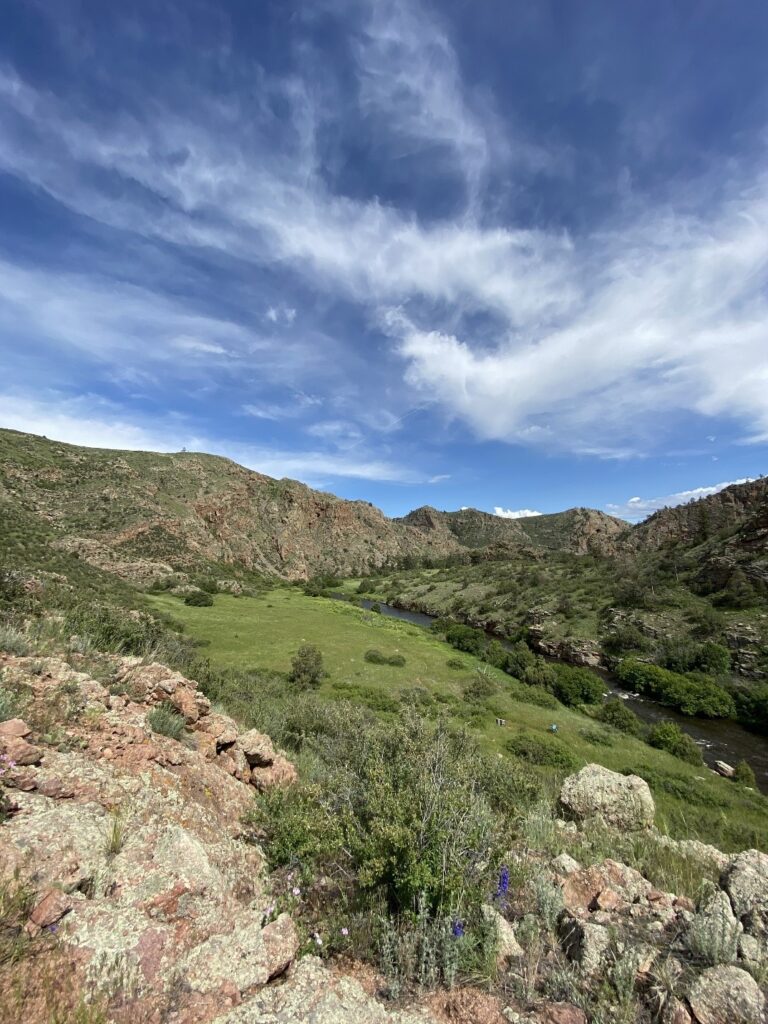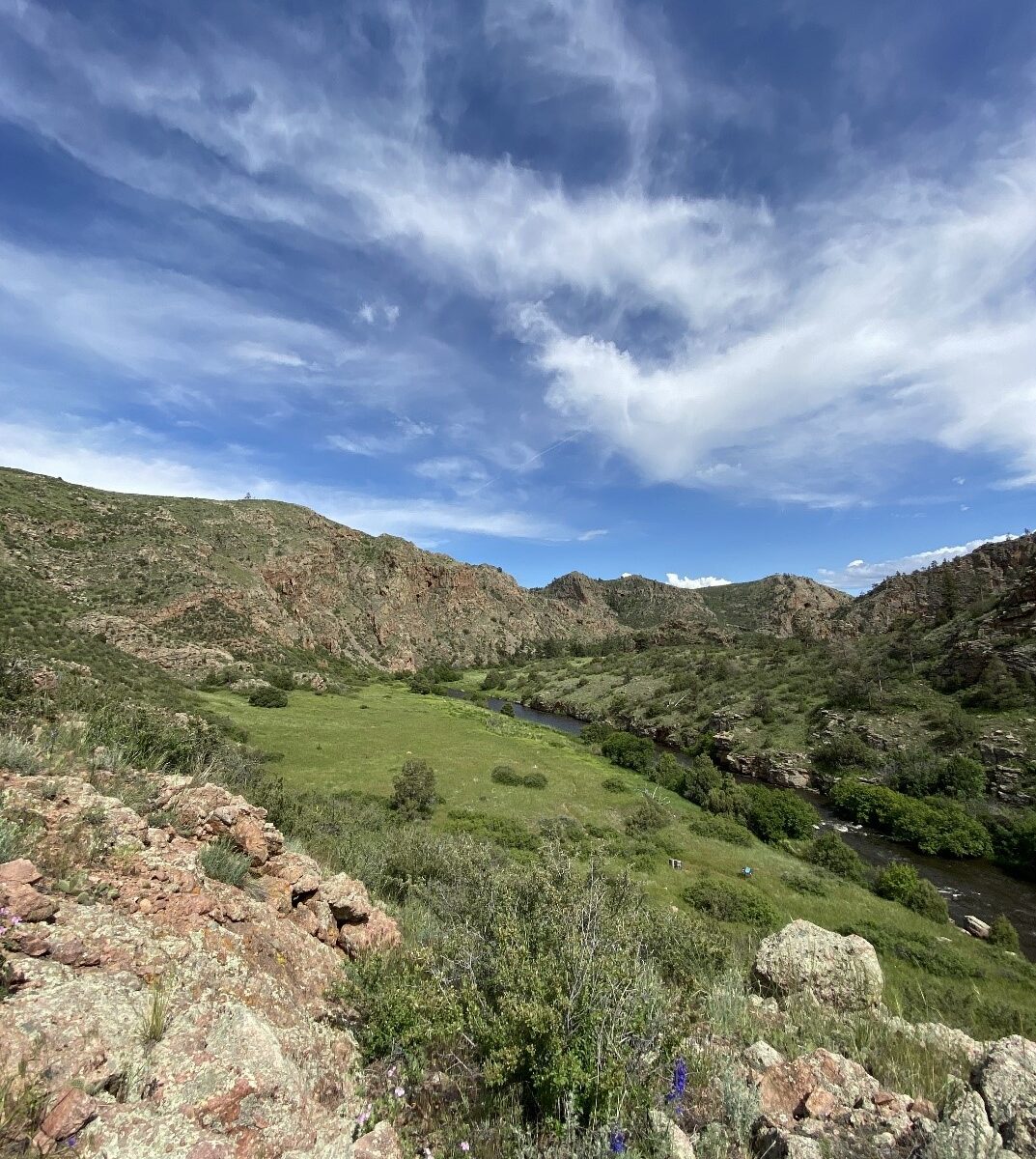EcoPerspectives Blog
Uncovering New Opportunities in Environmental Law
By Alejandra Mendoza, Alexandra Haymons, Chase Hetler, Valerie Xiong*
May 1, 2024

Introduction
American environmental law has made tremendous headway over the last 50 years. For example, federal laws now regulate commercial fishing, promote clean water, and support renewable energy development. These federal regulations complement numerous examples of decentralized and nonstate environmental governance, including using climate networks and coalitions to build urban resilience against climate change. Despite this progress, American environmental laws across scales and environmental regimes face at least four common challenges that constrain their efficacy: legal and statutory ambiguity, statutory interpretation approaches, bureaucratic implementation, and barriers to collaboration. As undergraduate students who are surveying the dominant environmental law frameworks that we hope to shape during our careers, we acknowledge these challenges. Nevertheless, we believe that each challenge we highlight also illustrates actionable pathways to strengthen and reimagine U.S. environmental law.
Resolving Legal Ambiguity
First, many federal environmental statutes contain vague statutory language that often provides opportunities to deprioritize conservation efforts. The Magnuson-Stevens Fishery Conservation and Management Act (MSA) is a clear example of this vague language. The MSA establishes standards for sustainable fisheries management with a broad goal to sustain, protect, and increase fish populations for food supply, ecosystem health, economic benefits, and community resilience. However, its bycatch standard says “conservation and management measures shall, to the extent practicable, (a) minimize bycatch and (b) to the extent bycatch cannot be avoided, minimize the mortality of such bycatch” without outlining tangible steps to do so. This vague language allows for the continued capture of bycatch in the name of practicality. Since profits tie to commercial fishing efficiency, passive methods that maximize catch and minimize effort are generally the most destructive. Thus, bycatch is not practically avoidable in the current commercial system. As a result, commercial tuna fisheries commonly catch marine megafauna like sharks, dolphins, and sea turtles as bycatch. Although fisheries target elasmobranchs (sharks, skates, and rays), more than 50% of their decline is due to bycatch.
Therefore, the MSA and accompanying regulations must clearly define necessary changes in the commercial fishing industry, such as gear modifications and passive gear observation, to achieve its stated objective of reducing and eliminating unsustainable bycatch. As the MSA demonstrates, American environmental law benefits from the presence of many comprehensive environmental statutes; embracing opportunities to clarify indistinct language in alignment with the purpose of these laws can eliminate loopholes and strengthen the frameworks that we already have.
Reforming Statutory Interpretation
Second, the ambiguous language in many American environmental laws means that many environmental lawsuits function as venues for contesting statutory interpretation. In environmental litigation, technicalities as narrow as a single term’s definition or “plain meaning” can determine the rigor of environmental protection. For instance, “navigable waters” and “waters of the United States” in the Clean Water Act (CWA) have been heavily debated for decades. In the landmark, unanimous United States v. Riverside Bayview Homes, Inc. (1985) decision, the Supreme Court declared wetlands “navigable waters” and “waters of the United States,” and attempted to specify this further in the heavily divided Rapanos v. United States (2006) case. But most recently, the court limited wetland protections in Sackett v. EPA (2023) based on a dictionary definition of the word “waters.”
Meanwhile, County of Maui v. Hawaii Wildlife Fund (2020) opened the doors for regulating nonpoint source pollution through groundwater, which has historically proven difficult to regulate. In both Riverside Bayview and County of Maui, the Court recognized the CWA’s greater commitment to prevent water pollution and accordingly expanded the definitions of ambiguous terms to fit this purpose. These decisions—reflective of a purposive approach to statutory interpretation—have resulted in increased protection of the nation’s waters amid emerging environmental challenges, when text-based approaches have at best been inconsistent and at worst achieved the opposite. More broadly, purposive approaches suggest an opportunity to strengthen environmental laws, as these approaches revive statutory interpretation practices to allow appellate courts to interpret statutes based on their “spirit” rather than their textual plain meaning.
Effective Implementation
Alongside challenges in interpreting existing federal environmental statutes, a third common challenge is how to effectively use statutory frameworks to their full potential. This has become apparent as the Bureau of Land Management (BLM) navigates the challenge of implementing renewable energy on public land under the Federal Land Policy and Management Act and the National Environmental Protection Act. These Acts establish the multiple-use sustained yield doctrine, which allows land use flexibility aligned with renewable energy goals.
In 2016, the BLM initiated the Solar and Wind Energy Rule under this framework, which formalized a “smart” approach to renewables on BLM lands and created designated leasing areas (DLAs) for renewable energy. Since 2021, BLM approved 35 renewable energy projects, expecting them to represent 8,160 MW of generation capacity. These projects, however, would only span 23,396 acres, less than one percent of BLM’s total acreage. If BLM allotted its full 870,000 acres to solar DLAs, it could provide enough energy to power over 29 million homes. The BLM has recently proposed several rules to expand renewables establishment, including the Renewable Energy Rule, which would amend the application process and lower rental fees in DLAs. By granting rights-of-way to projects in DLAs, this rule would lead to more efficient project implementation and overcome barriers to transferring federal policy into on-the-ground action. In the case of renewables adoption, maximizing the use of prioritized land for renewables is crucial to reaching energy goals, and streamlining rules to make implementation more efficient will make statutory frameworks more effective. More broadly, this case illustrates the opportunities inherent in promoting rulemaking that can leverage the transformative potential of existing environmental statutes.
Promoting Collaboration
Finally, implementing environmental law in a meaningful way requires deep collaboration across governmental scales and jurisdictions. One illustration of this challenge is how many American cities are grappling with questions of how to maximize their ability to achieve climate mitigation objectives while efficiently using resources. One important response to this common challenge is the emergence of climate networks across the U.S., including the United States Climate Alliance. Networked collaboration between cities and other stakeholders enables practitioners to share knowledge, leverage resources, and distill best practices for putting environmental law into action. City climate networks also establish municipal governments as key players who can help to localize national and global climate mitigation measures, and they help to support connected and coherent climate policymaking by jurisdictions that might otherwise regulate in isolation. More broadly, city climate networks exemplify the important, multi-scalar conversations that can allow actors to transcend governmental hierarchies, strengthening and expanding the scope of environmental law.
Conclusion
As climate change tests the limits of American environmental law, many of the shortcomings that have appeared suggest opportunities to strengthen its influence and scope. Although individual challenges in environmental law are diverse, ranging from loopholes in fishery management and Supreme Court interpretations to BLM rule implementation and multi-scalar governance, they collectively highlight the range of potential actors and approaches that may support better resolution of environmental challenges. Moreover, while seemingly distinct, the four cases that we present in this article underscore the overarching challenge, and corresponding opportunity, of seeking ways to fully and effectively utilize our existing frameworks in American environmental law and policy.
*Contributors:
Alejandra Mendoza: Senior Environmental Studies major, Colorado College
Alexandra Haymons: Senior Organismal Biology & Ecology major, Colorado College
Chase Hetler: Junior Environmental Studies and Political Science double major, Colorado College
Valerie Xiong: Junior Environmental Studies major, Colorado College

